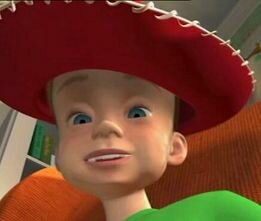So throughout watching James Cameron's latest movie hit, Avatar. I was puzzled and could not understand why so many people would want to watch a movie production of pure typical Hollywood story telling. Oh let's not forget it was shown in IMAX in 3D. The story line is so basic its saddening to see how much money was made of the film and how many people saw it. At the same time when I saw the previews and commercials on t.v. it looked like it was going to be an epic adventure with a good plot (battle scenes excite me). I'm sure the public felt the same way, and with James Cameron as the writer and director, it was for sure to be a hit.
Yeah the movie had stunning visuals, CGI, and great landscape views and spectacular scenery, but it's not enough to make the film a good film. I guess it's enough to make it a box office hit unfortunately. Avatar seems like another version of Dances with Wolves, but with CGI and blue people. Mainly because it's pretty much about a white guy going native and becoming a leader. Avatar is the latest modern day scifi version of white guilt fantasy. It's emphatically a fantasy about race, its a fantasy about race told from the point of view of white people. So a question in mind, why do white Americans fantasize about when they fantasize about racial identity? Avatar imaginatively revisits the crime scene of white America's foundational act of genocide, where the entire native tribes and civilizations were wiped out by European immigrants to the American continent.
In the film the group of soldiers and scientists have set up shop on the verdant moon Pandora. The inhabitants, the Na'vi, are blue giant cat like versions of native people. They worship nature gods, they wear feathers in their hair, they also paint their faces in war time, use bow and arrows and live in many tribes. When watching the movie, there is no mistaking that they are alien versions of stereotypical Native Americans. In Pandora, they make it the beautiful and rich land that America could still be without the sky scrapers and malls every where. Earth is torn apart with no greenery or materials, so the soldiers set to colonize in Pandora to mine expensive materials for an energy source. Some of the soldiers and scientist don't want to kill the Na'vi with their bombs and tanks, so they invent a machine that can link the human brain to a Na'vi body so they can win their trust. The "white messiah" Jake is one of the Avatar pilots for the soldiers, but soon on he starts to have a heavy bond with the Na'vi and grows close with them and realizes he loves the life as a Na'vi warrior than a marine solider. This is a classic scenario where a white male manages to get himself accepted into a closed society of people of color and eventually becomes the most important member to the group. So Jake tries to help them out and relocate them to a different area before the soldiers come and take it over, and thus a huge war is started.
There are many patterns in movies that continue out in Avatar as well. The humans are the cause of alien oppression and distress, then soon a white man who was once an oppressor switches teams at the last minute assimilating into the alien culture and come the savior.
These movies are focusing on white guilt, where our main character realizes that they are complicit in a system which is destroying the aliens (colored people) and see things from a new prospective. To take away the overwhelming sense of guilt, they switch sides and become race traitors and fight there old comrades. Its a wish to lead color people from the inside rather than from the (oppression, white) outside. It makes me wonder why they even needed the Jake character at all. The film could have done just as well with focusing on an actual Na'vi who comes in contact with the soldiers who have no respect for the environment. American filmmakers need to stop remaking the white guilt story, and start thinking about race in a new way.
image: www.jamaipanese.com/uploads/avatar-movie.jpg


